Why Aloe Vera Plants Turn Brown: 10 Reasons
-
Pete Ortiz
- Last updated:
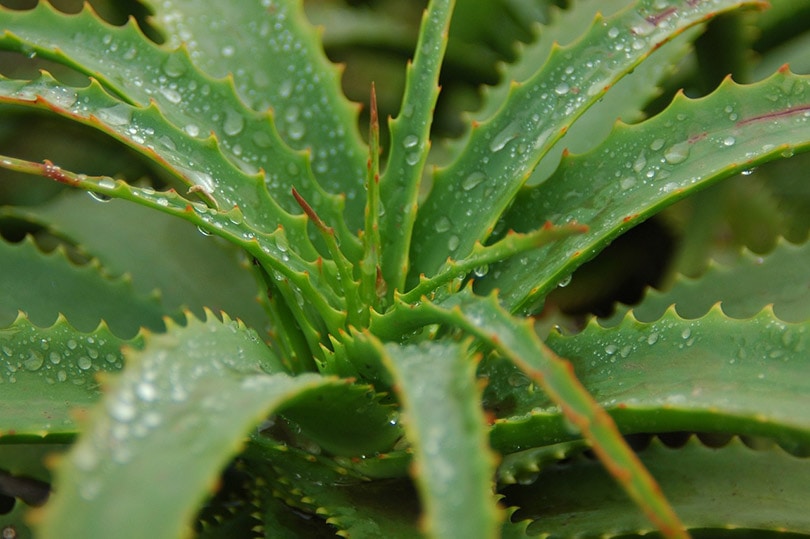
Aloe Vera is an ancient plant that has been serving humankind in several ways for many years. These plants are non-demanding and require very few requirements to thrive. However, if the needs of this plant are ignored, the leaves can turn from a healthy green to a brownish color.
Overwatering is one of the main causes of aloe vera leaves turning brown. It will inevitably lead to root rot, which causes the leaves to be wilted and eventually fall off. Signs of an oversaturated aloe plant include yellowing, mushy leaves, soft stems and foliage, and the tips turning brown.
Apart from excess water, several other reasons could be responsible for the brown color of aloe plants. The key is early identification of the problem, applying appropriate treatment, and making necessary adjustments. In this article, we have summed up the 10 most common causes of the aloe vera plant turning brown and the solutions to these problems. Read on to find out.
The 10 Reasons Why Your Aloe Plants Are Turning Brown
1. Overwatering/Underwatering
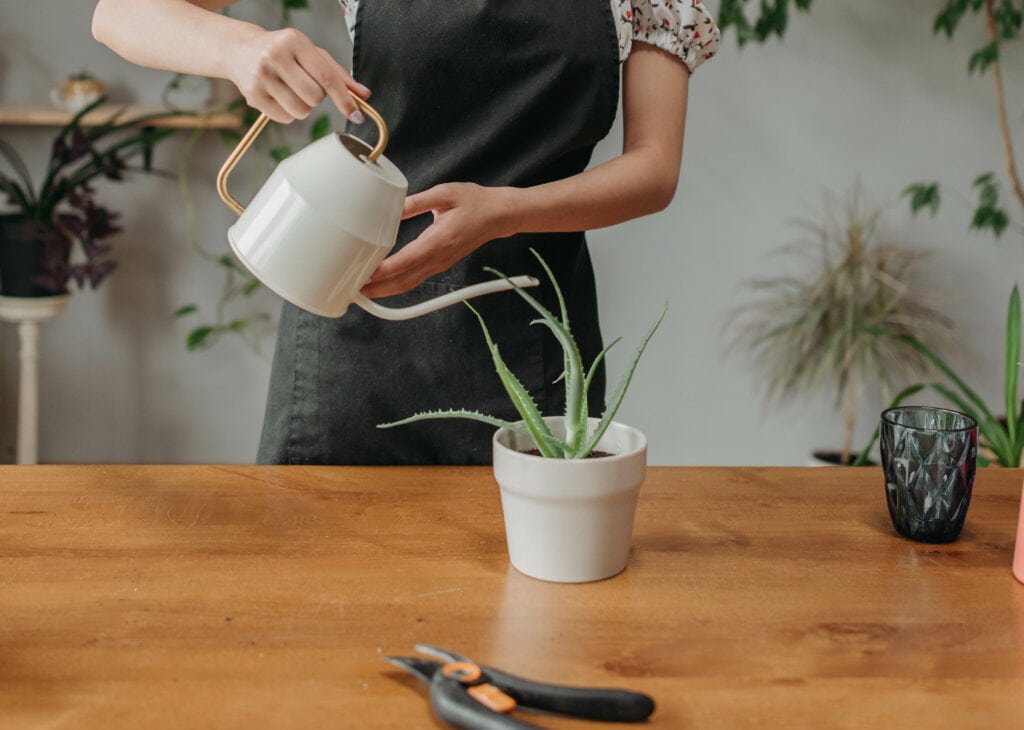
As already mentioned, excess water in the soil is one of the primary causes of yellowing or browning leaves on aloe plants. Aloe vera has very few stomata, therefore, they cannot perspire moisture as effectively as other plant species. This means excess water will accumulate within the meristem (a tissue of non-specialized cells).
When too much water is compressed within the meristem, the pressure can break the structure of the tissue. This will not only affect the physical form of the tissue but will affect the color as well. The leaves will start yellowing and then browning in advanced phases. As with all succulent plants, overwatering is a common cause of ruptured leaves, root decay, and in some cases, even death.
Similarly, when aloe plants do not receive enough water, the leaves harden, and brown spots begin to spread toward the base of the stem. The plant may even look shriveled and shrunken due to dehydration.
If you notice your aloe plant is turning brown, especially at the base of the stem, chances are high that it may be too late to save the entire plant. However, if you notice earlier symptoms such as brown spots on the leaves, you have the chance of saving the plant by employing a few quick fixes.
If the browning is a result of underwatering, thoroughly water the plant until the water exits through the drainage hole at the bottom of the pot to keep the plant alive. Just don’t water the plant until all the water you had added has dried up.
To save an overwatered aloe plant, transfer it to a new pot without damaging the roots. You can cut off any root rot or mushy roots with clean, sharp scissors. Also, you will need to replace the oversaturated soil with fresh soil before replanting the aloe plant.
Since brown spots and rotting roots also indicate that the soil is unsuitable for aloe vera, consider mixing the potting soil with perlite or succulent soil.
2. Exposure to Excessive Sunlight
When Aloe leaves are exposed to excessive sunlight and heat, they will inevitably dry up. The chloroplast starts losing its green coloring pigment (chlorophyll), which consequently causes discoloration of the leaves. In the last stages, the leaves will have turned brown.
Aloe plants may thrive in warm places with temperatures between 55°F–80°F, but they may experience sunscald, too. This is ironic, considering the plant is sometimes used to treat sunburns in humans. When the temperatures exceed this range, the leaves will start to develop brown spots. You can even find fully dried-out leaves still firmly stuck on your plant.
You may also notice that the aloe plant needs watering more often because the soil is drying up too quickly. These are sure indications that the plant is suffering from sunburn from exposure to too much direct sunlight.
If the brown spots on your aloe leaves are a result of exposure to excessive sunlight and overheating, consider moving the aloe plant to a more shaded area. If you move it indoors, ensure that the place you put it doesn’t get direct sunlight and that there are other plants.
Placing the aloe plant next to a window can cause edge burns and related problems. If the plant is outside, like on the balcony, you may have to set up a shade to protect it on the very hot summer days.
3. Sudden Climate Changes

Sudden temperature changes can cause browning of the Aloe plant leaves. The cells may not withstand the sudden temperature fluctuations, thus they will change color as they wither. Most of us with succulents like Aloe Vera at home tend to keep the plants indoors and take them out during summer. However, both indoor and outdoor spaces have unique characteristics.
You may end up causing stress to the aloe plant when moving the aloe from your sitting room to the balcony if the environmental conditions are different. For instance, the light in your living room may be dimmer with no strong winds, and the humidity could be fairly high.
However, the conditions on the balcony will be different because of the wind, bright sunlight, and low humidity. When the aloe plant is moved between these two positions, it responds with stunted growth, browning of the leaves, and lack of bloom.
If your aloe leaves are already getting brown spots, you could move the plant away from excess sunlight, heat, and humidity. Nevertheless, the best solution is prevention. Slowly acclimate the plant to its new home instead of making the big change in one sitting.
4. Fungal Infections
Sometimes discoloration on aloe leaves is caused by fungi. The plant may be resilient to most diseases, but it can occasionally get fungal infections.
Contrary to popular belief, aloe plants don’t get infections when in the wild or in places that experience dry winters. However, indoor spaces with high humidity and high soil moisture content are highly susceptible to fungal infections. Additionally, plants fertilized with excessive nitrogen can get out of balance, making them highly susceptible to fungal infections.
These three main fungi can make a home out of your aloe plants. They normally do not respond equally to treatment. The fungi include:
- Gray Mold (Botrytis Cinerea) – It may be called gray mold, but this fungus is brownish and appears in clusters of spores. They create a thin layer on top of stems and leaves, forming a patina. Gray mold is quite insistent and can only be stopped with organic fungicides like copper soap.
- Anthracnose (Colletotrichum) – This is a fungal infection caused by a fungus called Colletotrichum. It resembles rust, which appears brown at first sight, but closer inspection reveals that it has a red-orange shade. The fungus usually starts as small spots which multiply and spread very quickly
- Root and Crown Rots (Phytophthora) – This is by far the most dangerous of all the three fungi. It has no known treatment and the best chance of saving the aloe plant is to prevent fungus formation. It usually starts at the roots, removing the feeder roots. Then, it moves up, where you are likely to notice its presence as a series of brown lesions. It eventually gets to the leaves, making them turn yellow as they wilt. Eventually, the aloe leaves turn brown and remain dry and attached to the stem.
We mentioned earlier that most fungi do not respond to treatment. However, recent studies show that you can control the three fungal species with some simple fixes. For the Phytophthora nicotiana, a mix of neem oil, clove oil, and pepper extract applied on leaves, stems, and roots should significantly reduce the spread of the fungus.
For Phytophthora capsicum, spraying some water mixed with thyme and palmarosa essential oils can have great results. For Phytophthora nicotianae, spray extracts of cassia and clove to the aloe plant to reduce fungal spread.
5. Wind and Draught
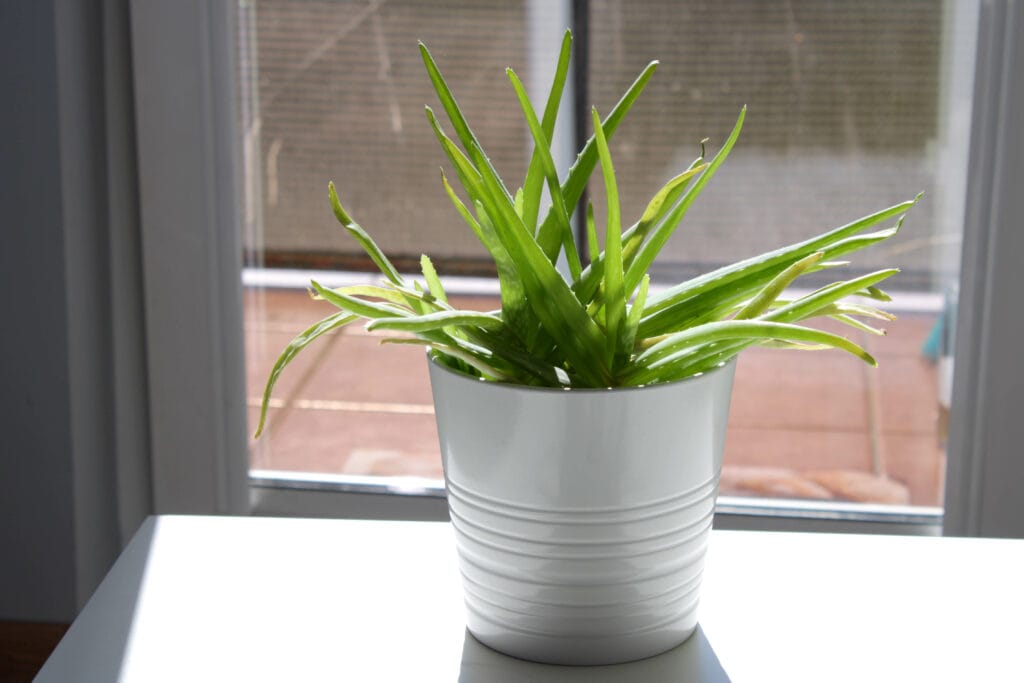
Excessive wind and drought could also cause the aloe plant to turn brown. Strong winds tend to have a drying effect on plants. They suck up moisture from the plant starting from the leaves because they are the most exposed to the draft, all the way to the base of the plant.
Aloe vera is best sheltered from strong winds. In fact, succulents such as aloe vera can suffer from wind scorch. Even if your aloe plant is indoors, you shouldn’t put it on the window seal where penetrating wind can damage the plant.
If you have planted the aloe plant in an outdoor setting, choose a sheltered position or use windbreaks. Hedges and bushes are excellent windbreakers for aloe plants.
6. Excessive Cold
Similar to excessive heat, exposure to excess cold conditions can also cause browning. It indicates tissue decay which causes death in aloe plants. In some cases, it shows that the plant tissue has started rotting if accompanied by softening and the jellification of aloe vera’s tissue.
It is a well-documented fact that aloe vera thrives in warm weather, like in arid and semi-arid environments. While some adult and mature aloe species can withstand temperatures as low as 32°F, when temperatures fall below 40°F, the plants will suffer.
If you notice that your aloe plant is turning brown due to a cold shock, consider moving the plant to somewhere warm and sunny. You need to keep the Aloe plant in an environment whose temperature ranges between 55°F–80°F. Also, reduce watering because when a plant is in shock, the stems lose the tissue that retains absorbed water. With a sterilized sharp blade, you can prune off any softened tissue because it will rot and spread to the rest of the plant.
7. Too Much Fertilizer
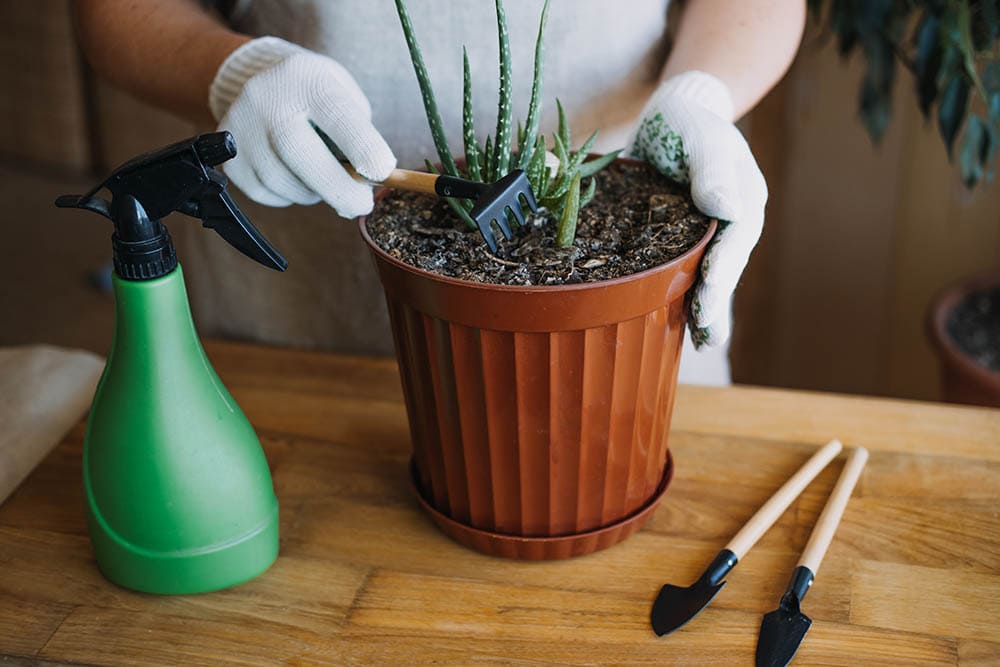
When aloe plants receive excessive nutrients, some of the plant’s tissue may die. This will result in the plant changing the color of the tissue from a healthy green to a dead brown. Like most succulent plant species, aloe vera doesn’t thrive in areas that are too rich with nutrients.
Moreover, too much fertilizer causes salts to accumulate in the soil, leading to what farmers commonly refer to as fertilizer burns. Also known as tip burn, the burn manifests itself as browning on the tips of the aloe leaves. This is a common sight, where healthy-looking plants have tips that appear brown, dry, and burnt.
When it comes to feeding your aloe plants, never confuse care and affection with abundance. You should fertilize your plants sparingly, preferably, never more than once a month, and only from spring to summer.
If you notice one or two of your aloe leaf tips have a brown color, suspend fertilizing immediately. You can leave the plants for even a full season and then resume fertilizing the following spring. However, if the problem is extensive, consider changing the soil. Simply re-pot your aloe plant into a new, light, and well-draining soil after suspending feeding.
8. Pests
When we think of Aloe Vera, we think of a highly resilient plant that is not fazed by pests or diseases, yet these plants are subject to attacks by several types of pests and insects which can damage the plant leaving brown spots on the leaves. Aloe plants are susceptible to attacks from mealybugs, fungus gnats, mites, and flies.
These insects slowly feed on aloe vera, whose damage is hard to notice and, worse yet, can be lethal to the plant. Pests like mites may be too hard to see, but they leave various traces of their presence. When brown spots develop on the leaves, they look like they are twisted and develop in deformed ways. This is due to the chemicals deposited on the leaves with every bite a mite takes.
To fight pests, you can prune away any sick or severely infected plants. Then, closely examine the leaves to find out exactly which kind of pests are attacking your aloe plants and treat them accordingly.
Mealybugs can be washed off the plant with a steady stream of water without inflicting additional damage to the plant. Mites, on the other hand, can be eliminated with commercial pesticides such as miticide. If the pesticides don’t kill the mites, you may have to uproot and dispose of the plant.
9. Physical Damage
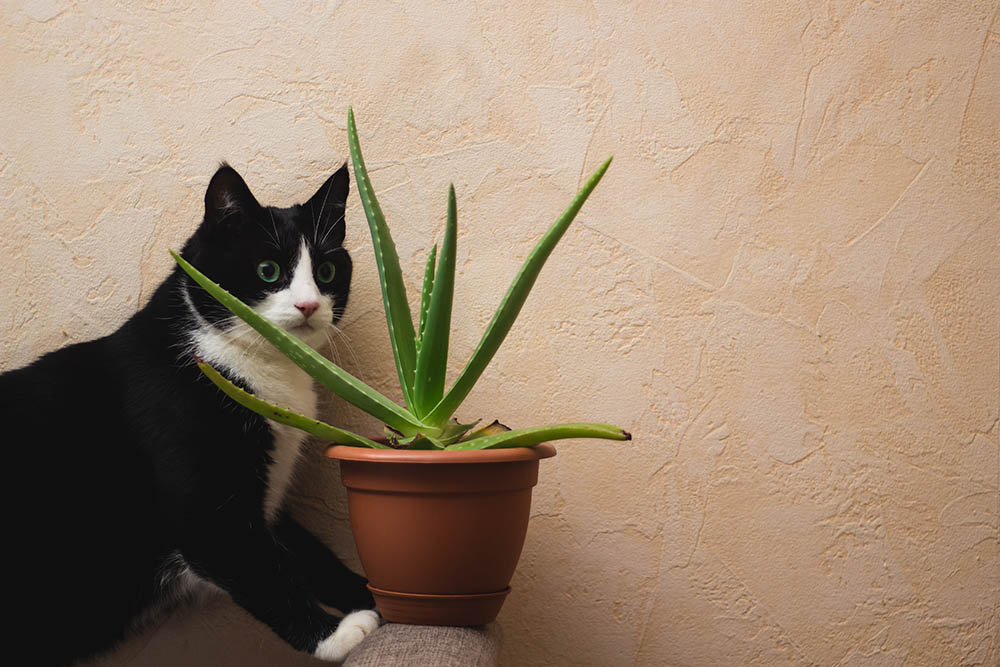
Sometimes, adventurous or curious children and kittens may inadvertently damage your aloe plants. The damage can turn into brown spots over time. Mild damage may not be aesthetically appealing, but it doesn’t permanently damage your aloe plants. However, rough handling and severe damage will almost certainly kill your plant.
If the damage to your aloe plant is too severe, you can simply prune away the affected parts. But if mild, the damage to the leaf should be over in a few days.
10. Psychological Disorders
Aloe vera needs certain environmental conditions to grow healthy and thrive. If you do not meet these conditions, your aloe plant will start to show symptoms of discomfort. One major symptom of underlying psychological disorders is the browning of the leaves.
Psychological disorders occur in plants due to nonpathogenic factors like poor lighting, adverse temperatures, water requirements, and poor nutrition, among others.
It is not hard to detect and save an aloe plant that is affected by psychological disorders. First, you need to know the exact growing conditions that are ideal for your aloe plant. Then, meet the requirements.
Just make sure that you do not over-fertilize, overwater, or underwater the plants because, as earlier mentioned, an overabundance can be detrimental. If you change the growing conditions, your aloe vera will recover and grow healthily.
Conclusion
Aloe vera is an important plant species for human beings. It has aesthetic and medicinal values, making it a convenient plant to grow at home. Fortunately, the aloe plant requires little attention or specialized care to thrive. However, if the plant’s ideal growing conditions are not satisfied, the plant turns brown.
The main causes of browning in aloe plants are overwatering, extreme heat and cold conditions, pests, fungi, and excessive fertilizer. Fortunately, you can solve the browning by being vigilant with the amount of water, sunlight, and fertilizer that you feed the plant.
- Easy Solutions for Aloe Vera Turning Brown
- Treatment Tips for Aloe vera Psychological Disorders
- Reason why Aloe Plants Turn brown
- Why Aloe Plant leaves turn from Green to Brown
- Reasons for Wilting, Brown Aloe vera Leaves
- How to Prevent Aloe Vera Leaves from Turning Brown
- Why you Shouldn’t overwater Aloe Plants
Featured Image Credit: joanshannon, Pixabay
Contents


